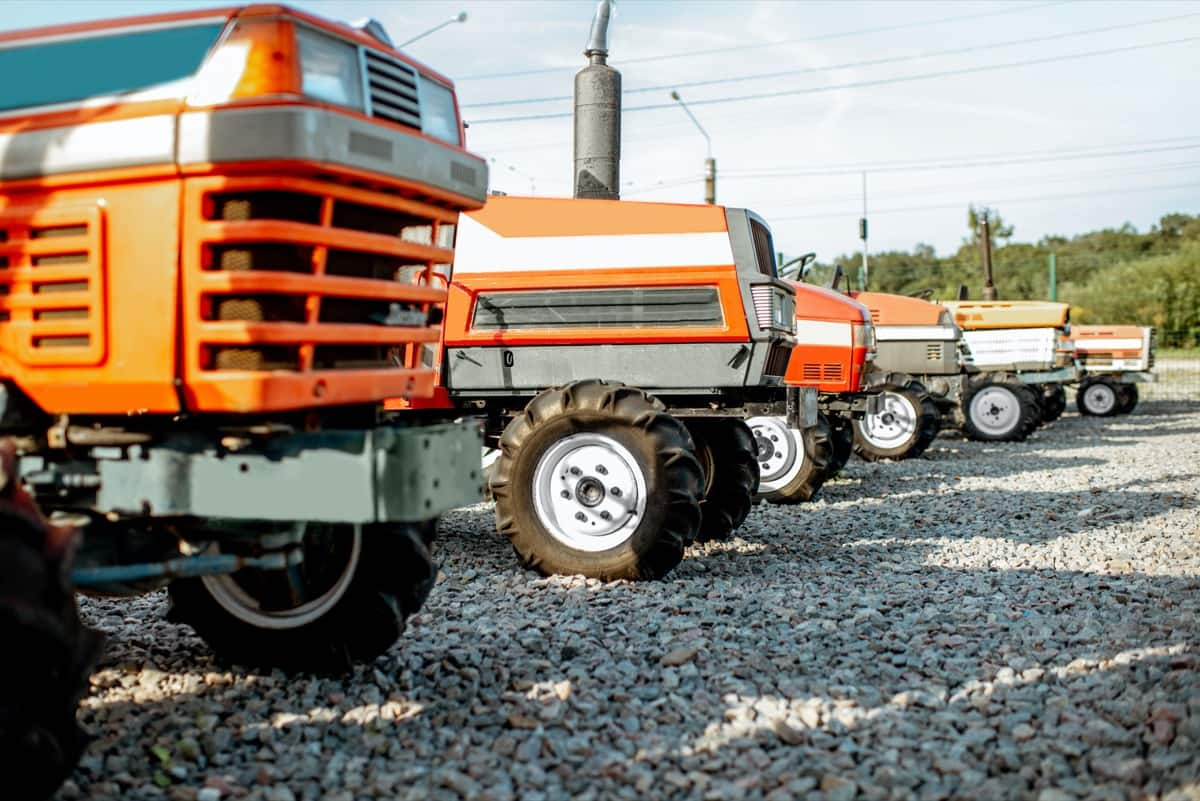There’s a common phrase in farming and agriculture, “money grows where tractors go.” Given its versatility and high demand in multiple sectors, a tractor can be a highly profitable investment for both seasoned and novice entrepreneurs. This comprehensive guide serves as an introduction to the realm of creating a small tractor business for beginners. We’ll explore making money with a tractor, how to charge for tractor work, assess the operational cost of a tractor per hour, and the potential for monthly income.

How to Make Money With a Tractor
Understanding the Scope and Potential of a Small Tractor Business
First and foremost, it’s essential to understand that making money with a tractor extends beyond just farming. Agriculture remains a primary domain, but there are numerous other subjects to explore. These include snow plowing, mowing, landscaping, contracting for construction projects, hauling, or offering specialized services like land grading, clearing, and trenching. A compact tractor enterprise is adaptable and can grow based on your finances, assets, and the demands of your nearby market.
Understanding Your Market and Customer Needs
It’s crucial to grasp your market and customers’ needs to succeed in a small tractor business. As a beginner, research your local area to find out which services are in high demand. Understand the terrain, target customers’ characteristics, and their willingness to pay for tractor services.
Each market has different needs, whether it’s agricultural work, landscaping, construction assistance, or snow removal. Tailoring your services to meet these needs and setting competitive prices will make your business more appealing to prospective clients. Understanding and adapting to your market’s requirements is a continuous process that can help drive the growth and success of your tractor business.
Purchasing Your Tractor: A Significant First Step
Acquiring a tractor is your most significant initial investment, and as a beginner, it’s crucial to balance cost with functionality. You don’t necessarily need a brand-new, state-of-the-art tractor to begin. Depending on the intended services, a good-quality used tractor can serve the purpose effectively. Research is essential here. Find out what specifications (like horsepower, size, and attachments) are suitable for the kind of work you plan to offer. It’s also important to remember that different tractor models have varying maintenance needs and operational costs.
Understanding the Costs: How Much Does it Cost to Run a Tractor Per Hour
Once you have your tractor, it’s necessary to determine its operating costs, which is vital for pricing your services appropriately. The cost of operating a tractor per hour depends on fuel, upkeep, fixing, insurance, and loss in value. Direct costs like fuel are easy to calculate, as they correlate directly with usage.
However, beginners often overlook costs like repairs and maintenance, but these can significantly impact your tractor’s operating cost per hour. It’s wise to set aside a contingency fund for unexpected repair expenses. Typically, the cost of running a small to medium-sized tractor can range anywhere from $15 to $30 per hour, depending on its make, model, and usage.
In case you missed it: How to Make Money with a Computer/Laptop at Home

Setting the Price: How to Charge for Tractor Work
Pricing is a critical factor in your small tractor business. It’s not just about covering the costs but also ensuring you turn a profit. When learning how to charge for tractor work, you must consider the running costs, your time and effort, the market rate, and any value-added services you’re providing. You could consider three primary pricing models: hourly rates, project-based pricing, and service packages.
Hourly rates are straightforward, with clients paying for your hours. In project-based pricing, you assess the scope of work and provide a lump sum quote for the entire project. Service packages are when you bundle various services and offer them at a consolidated price, which can benefit recurring clients or larger projects. Choosing the right pricing model is vital, considering the job, market conditions, and personal preference, as each option has pros and cons.
Potential Monthly Income from a Tractor Business
A tractor business’s potential monthly income largely depends on the services provided, the number of clients, your pricing model, and how you manage your expenses. On average, small tractor businesses can make between $50 to $100 per hour, which translates to a considerable monthly income if you work full-time.
However, remember that income can fluctuate based on seasonal demand and regional economic conditions. During busy periods such as the farming season, snowfall months, or construction booms, demand for tractor services can spike, leading to a surge in your monthly income.
Marketing Your Small Tractor Business
To consistently maintain and increase your monthly income, it’s essential to have an effective marketing strategy in place. Traditional methods, like word-of-mouth referrals and local advertising, can be supplemented with digital marketing tools. Establish an online presence through a website showcasing your services, rates, and customer testimonials.
Utilize social media platforms and Google My Business for visibility. Join local business directories and participate in community events. A robust marketing strategy will keep your small tractor business at the forefront of potential clients’ minds, resulting in more contracts and a higher monthly income.
Expanding Your Small Tractor Business
Start small with one tractor and a few services as a beginner, but think about expanding as your business grows. This expansion could mean investing in more tractors, hiring employees, or adding more services to your portfolio. An expanded service range might include wood chipping, stump grinding, land clearing, and more. Remember, with expansion comes additional management responsibilities and overhead costs, so it’s crucial to have a sound plan in place.
In case you missed it: How to Make Money With Shopify: A Beginners Guide

Conclusion
Making money with a tractor as a beginner might seem overwhelming initially. Still, it can be a highly lucrative venture with careful planning, a clear understanding of costs, and an effective marketing strategy. A small tractor business offers significant flexibility, allowing you to tailor it to your circumstances, interests, and local market conditions.
The key is to start small, learn as you go, and gradually expand your services. With time and effort, your tractor could become an income-generating asset, offering a steady stream of revenue and the satisfaction of running your business.
- Handicraft Making at Home: A Small Profitable Business Idea
- Pet-Tech Startups: Innovations for Animal Lovers
- Tech Repair Services: Meeting the Demand for Gadget Maintenance
- Maximizing Rewards: Smart Credit Card Habits for Cashback and Points
- Ultimate Guide to Making Money from Goat Milk Business
- How to Start an Agricultural Value Added Product Business
- Value-Added Business Ideas for Greenhouse: The Best Ways to Make Profits with Greenhouse Farming
- How to Make Profits with Organic Country Chicken: Best Strategies for Beginners
- 10 Value-added Business Ideas for Millets: Low-investment and Highly Profitable